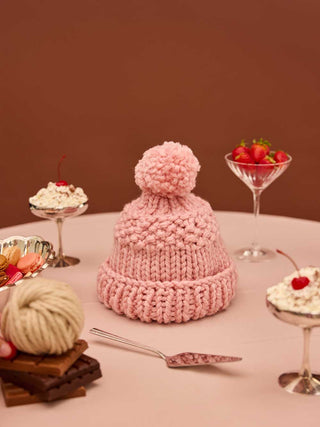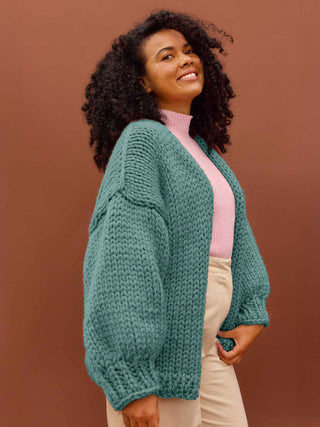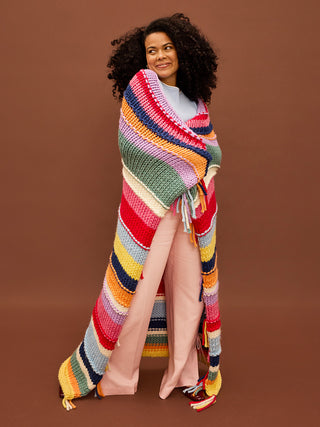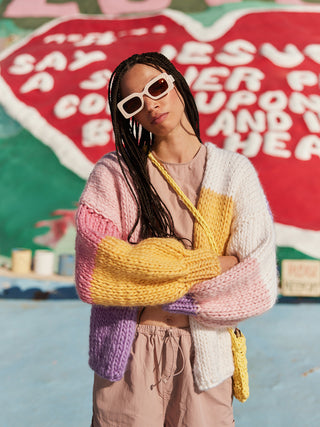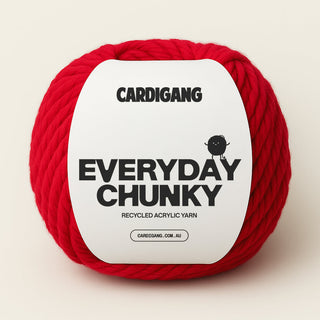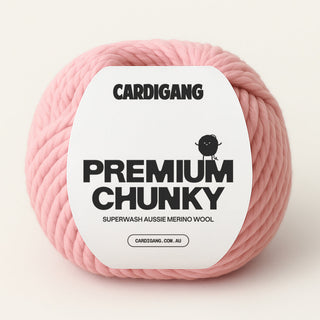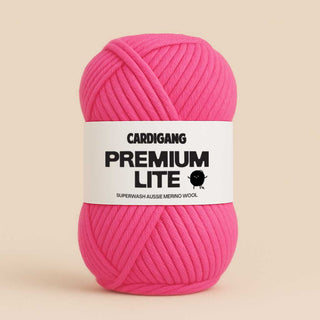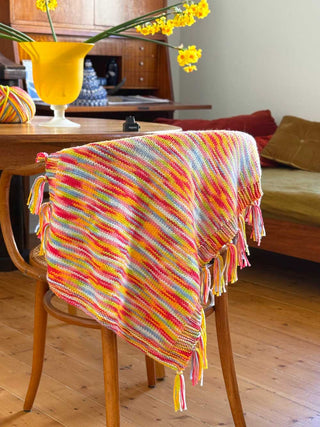A step-by-step guide to knitting the Matilda Bonnet
THE MATILDA BONNET IS AS WARM AS IT IS ADORABLE! THIS ISN’T JUST ANOTHER ACCESSORY; IT’S A WARM HUG FOR YOUR FACE AND A STYLISH SHIELD AGAINST THE CHILL. IT’S TIME TO CREATE SOMETHING WARM AND WONDERFUL.
Even if you've never knitted before, we'll take you from zero to hero in no time 🦸♀️
When it comes to knitting, practice makes perfect
Before we get started on the pattern we suggest you spend a bit of time learning the basic stitches you’ll need to complete your scarf.
The Matilda Bonnet uses just two stitch types- the queen of the knitting world, the knit stitch, and her friend the purl stitch. We put these two stitches together to create a stitch pattern called stockinette stitch.
You'll want to be confident with both the knit and purl stitches before you start 🧶 You'll also want to get a hang of tying a slip knot and casting on your stitches which is the first step in any knitting project.
You can use the yarn that came in your kit to practice with. Once you've got these mastered you'll find the pattern a cinch!
Knitting double strand
We knit our bonnet double strand. This means you have two strands on the go at once. To do this, we suggest you work with both balls at once.
🚨 Now, a little word of caution when knitting with two strands. It's much easier to put your needle through your stitch in the wrong place, and if you do this you'll end up with more stitches on your needle than you've cast on 🤯 We recommend counting your stitches every few rows as you knit to make sure you haven't added any rogue stitches. If you have, and it's picked up quickly, you can knit two stitches together on the next row to return to your correct number of stitches for the piece.
Total beginner? 👩🏫
For a more comprehensive lesson on the basics of knitting visit our LEARN TO KNIT Page.
📏 Test your tension
While we're practising and before you start your project, you'll want to make sure your tension (how tightly or loosely your knitting is) is juuuust right 🥣 We do this by making a “tension swatch”. It's a bit like Goldilocks, if the tension is too tight, your piece will be too small, and if it's too loose it may not hold its shape and might be too big.
GAUGE: IF DONE CORRECTLY, YOUR 10X10CM KNITTED SWATCH SHOULD BE 10 STITCHES WIDE AND 12 ROWS HIGH WHEN KNITTED double strand IN stockinette STITCH ON YOUR 10MM NEEDLES.
TO TEST THIS, JUMP ON YOUR NEEDLES and CAST ON 12-14 STITCHES, THEN KNIT IN stockinette STITCH (KNIT ALL STITCHES IN one row, then purl all stitches in the new) FOR 14 ROWS. THEN MEASURE A 10X10CM SQUARE AND COUNT YOUR STITCHES AND ROWS WITHIN THAT SPACE TO MAKE SURE YOU'RE KNITTING AT THE CORRECT TENSION.
IF YOU'VE GOT MORE STITCHES OR ROWS THAN THE INSTRUCTIONS SAY YOU SHOULD HAVE, YOUR KNITTING IS A LITTLE TOO TIGHT, AND IF YOU'VE GOT LESS YOUR KNITTING IS TOO LOOSE. ADJUST YOUR TENSION BY HOLDING THE YARN A LITTLE MORE TIGHTLY/LOOSELY AS YOU KNIT.

TIME TO SWITCH OFF. STITCH ON. AND WHIP UP YOUR COSY BONNET.
⚡️What you'll need
Your kit comes with everything you'll need to make your masterpiece. In your kit you'll find;
- 10mm needles
- 2 balls of Cardigang Alpaca Yarn
- Stitch marker
- A darning needle
- Made by me tag
You also want to have a pair of scissors handy.
💪 Remember learning a new skill can be a little challenging at first, and you’re bound to find yourself making some mistakes along the way. But as with learning anything, your brain and your hands slowly start to get the hang of it, muscle memory is created, and soon the thing you found tricky/daunting/scary is like second nature!

STEP 1
First thing first, cast on your stitches. Using two strands, make a slip knot to get started and then cast on 3 stitches.
Remember you're working with two strands. This gives us a thicker and more full scarf.
💭 Casting on, like many things in knitting, can be done in a number of ways so if you don't like the technique we suggested, you can pick any that’s right for you.
STEP 2
Let's get straight into it with the increases. An increase is where we turn one stitch into two stitches, thereby increasing the width of our piece.
STEP 3 & 4
We will make our bonnet in stockinette stitch which is created when you alternate knit and purl rows. So let's complete 3 rows of stockinette stitch as the pattern instructs.
STEP 5
Okay, time to introduce our stitch marker into the mix. Your stitch marker is used to mark the middle stitch and we move it each row. Just undo the marker and clip it around the base of the stitch.
We're going to do some increases before and after the stitch marker to continue to 'grow' the bonnet.
STEP 6
Repeat the sequence as instructed. Use the circles in your pattern to mark off each row you've completed. The circle with the '+' sign is an increase row.
Just keep knitting… DID SOMEBODY SAY WINE TIME?! 🍷
STEP 7 to 13
Continue following the pattern. Once you've completed step 13 you're half way!

STEP 14
Yay! You're halfway 🔥
Now, instead of increases, we're going to do decreases so narrow our bonnet back down to the tip. We use a slightly different technique to decrease stitches depending on the angle of the decrease - you'll either slip, slip, knit two together, or you'll knit two together.
🎬 Watch how to slip, slip knit two together
STEP 15 to 22
Continue following your pattern, completing decreases as instructed. In these steps the '-' in the circles signifies a decrease - makes sense!
STEP 23
✔️ Time to cast all your stitches off your needle.
When you cast off the second last stitch you'll be left with one stitch on your right needle. Cut your yarn from the ball (give yourself about a 25cm tail) and thread the tail back through the last stitch to secure it.
Use your darning needle to weave in the loose ends. You're just threading them back through the work to conceal them. Then trim any long ends with your scissors.
D.O.N.E! You've finished your bonnet, well done! Epic work 🤩 If this was your first-ever knitting project or one of many, we hope you had a blast click-clacking and making your masterpiece💥❤️
Can't get enough Cardi?
Join the Cardigang Click on Facebook and connect with other knitters, ask questions and share your masterpiece.
In a bind and need a little more help?
Email us at stitchup@cardigang.com.au and we'll be able to help! Whether you're just starting out, or you've got a specific question or problem (dropped a stitch, no stress!), we're here to get you out of a bind.


